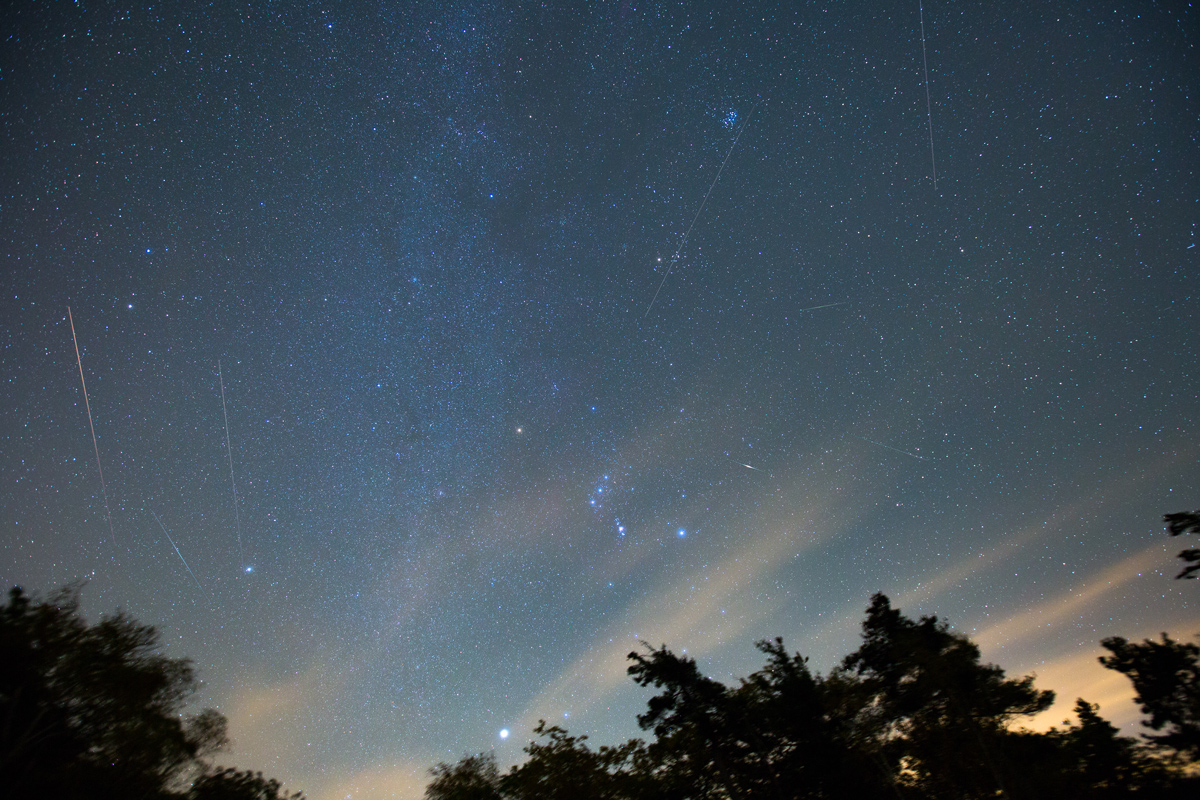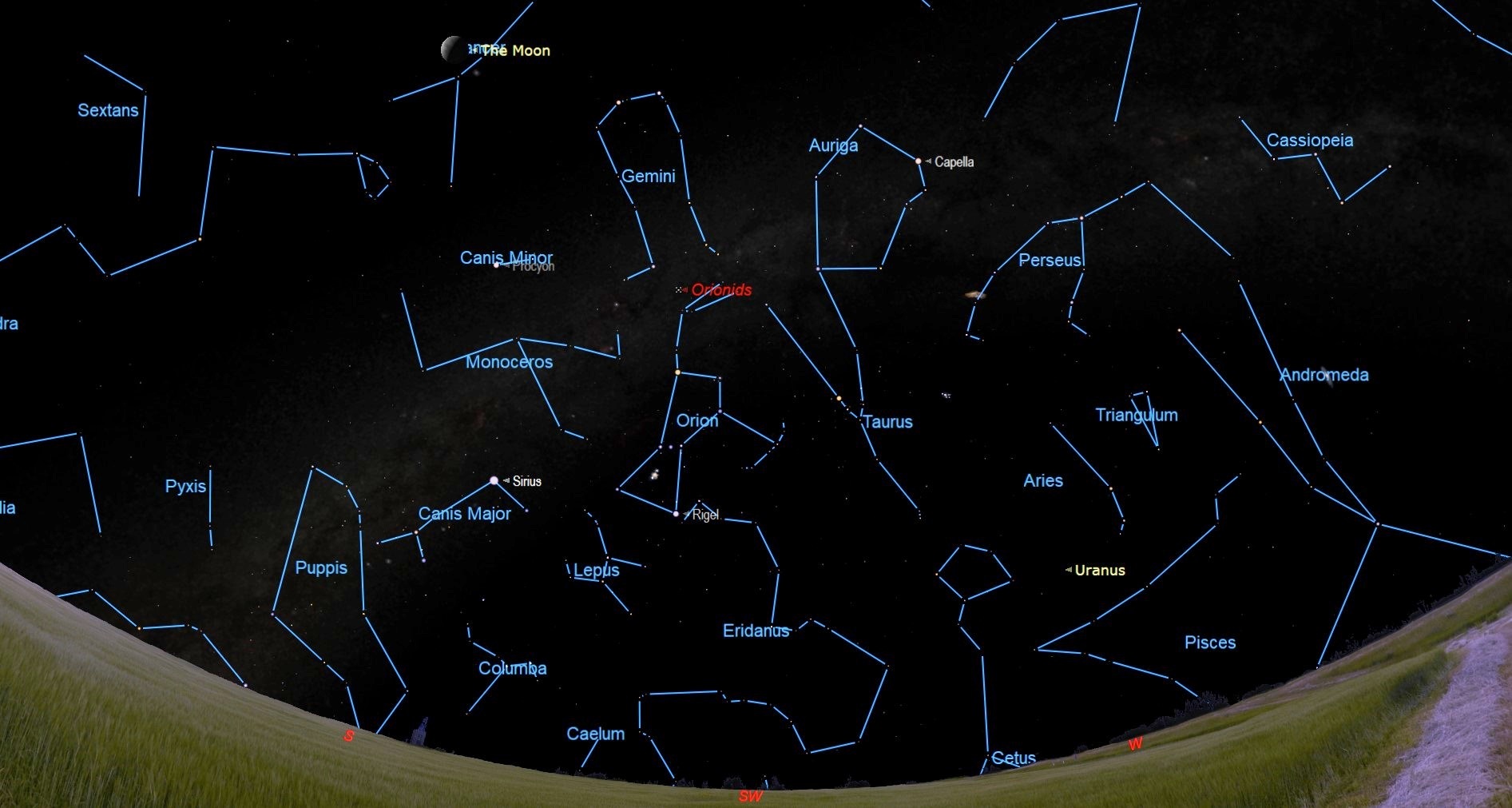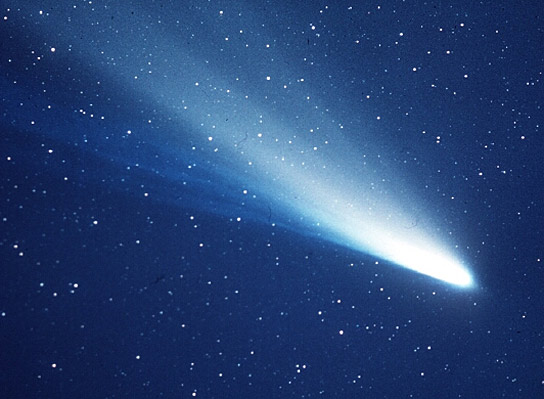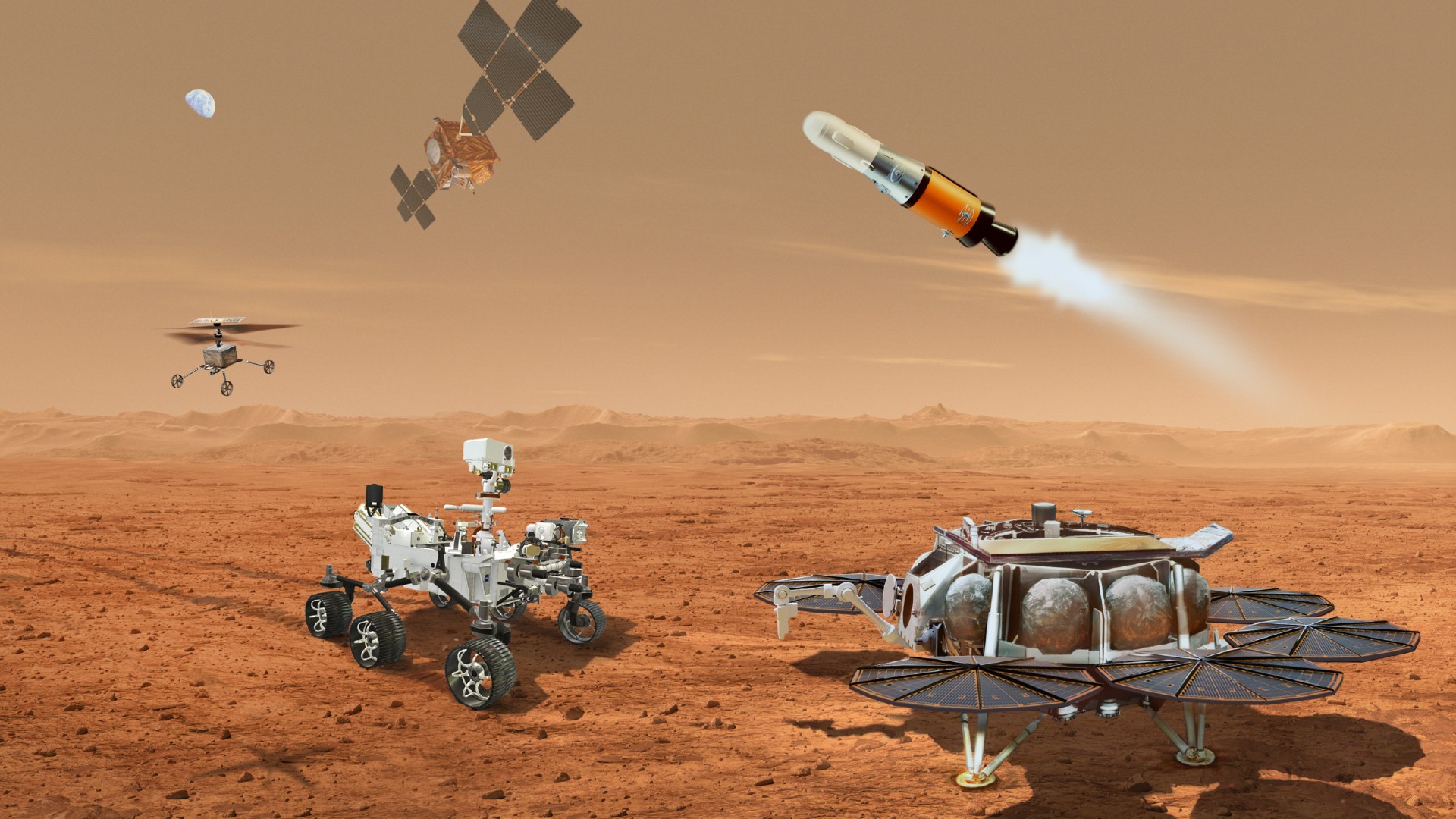The Orionid Meteor Shower 2019 Peaks Tonight! Here's What to Expect
Next to the Geminids of December and the Perseids of August, the most reliable of the annual displays of "shooting stars" are the October Orionids. Unfortunately, this year, the Orionids are going to face a handicap. When the Orionid meteors reach their peak on Tuesday morning (Oct. 22), the moon — just past last quarter — will also be in the after-midnight sky. Hence, its glare will somewhat hamper observations in 2019.
The Orionid meteor shower normally last from about Oct. 16 to 26. A few swift Orionids may appear as early as the start of October and a lingering straggler or two as late as Nov. 7. The numbers seen by any one observer tend to reach a maximum of about 20 per hour when conditions are clear and dark and the shower's emanation point (called the "radiant"), which lies near the border of the constellations Orion and Gemini, is well up in the sky.
These meteors are known as "Orionids" because the meteors seem to fan out from a region to the north of Orion's second brightest star, the ruddy hued Betelgeuse.
Related: Orionid Meteor Shower 2019: When, Where & How to See It
Currently, the Orion constellation appears ahead of us in our journey around the sun, and has not completely risen above the eastern horizon until after 11:30 p.m. local daylight time. These meteors are at their best during the predawn hours at around 5 a.m. — Orion will then be highest in the sky toward the south. Since Orion's famous three-star belt straddles the celestial equator, the Orionids are one of just a handful of known meteor showers that can be observed equally well from both the Northern and Southern Hemispheres.
Orionid meteors tend to be somewhat dim and not well seen from urban locations, so it's suggested that you find a safe rural location to see the best Orionid activity. Recent studies have shown that about half of all Orionids that are seen leave trails that lasted longer than other meteors of equivalent brightness.
After peaking on Tuesday morning, activity will begin to slowly descend, dropping back to around five visible meteors per hour around Oct. 25.
Breaking space news, the latest updates on rocket launches, skywatching events and more!
The moon "muscles in"
Even though the moon is now on the wane, it will still have an adverse impact on this year's Orionids. On the morning of the Orionid maximum on Tuesday, it will be in the constellation of Cancer — a wide (40%) illuminated crescent moon, illuminating the sky with its light. So, although the Orionids will be at their peak, a fair number of these streaks of light might be squelched by moonlight. Still, an exceptionally bright Orionid, could still attract attention in the moonlight.
Probably the best plan this year would be to try for about 90 minutes between 11 p.m. and 12:30 a.m. local daylight time on the evening of Oct. 21, and an hour longer on the following night. This is roughly the interval between the time the radiant rises and the time of moonrise.
Halley's Legacy
The Orionids are often referred to as the "legacy of Halley's Comet." In fact, these tiny flecks of dust are merely the cosmic litter that this famous comet has left behind in space along its orbit from previous passages around the sun. Meteoroids that are released into space are the remnants of a comet's nucleus.
These particles — ranging in size from copier toner to sand grains — remain along the comet's orbit in space. In the case of Halley's Comet, its dirty trail of debris has been distributed more or less uniformly all along its entire orbit. When these tiny bits of comet collide with Earth, friction with our atmosphere raises them to incandescence and produces the effect popularly referred to as "shooting" or "falling" stars.
The orbit of Halley's Comet closely approaches the Earth's orbit at two places. One point is in the early part of May, producing a meteor display known as the Eta Aquarids. The other point comes in the middle to latter part of October, producing the Orionids. Step outside before sunrise during this weekend on into early next week, and if you catch sight of a meteor, there's about a 3 out of 4 chance that it likely originated from the nucleus of Halley's Comet.
A long-awaited return
Halley's comet itself ... the "Mother of all Orionids," is due to return to the inner solar system in midsummer of 2061. In fact, the comet should be a very striking showpiece in the western evening sky that year during the first week of August.
At the comet's most recent return in February 1986, the orbital geometry between the sun, the comet, and our Earthly vantage point was said to be just about the worst in 2,000 years: the comet was positioned on the far side of the sun when it was brightest, and when it finally pulled away from the sun's vicinity a couple of months later, it had dimmed considerably.
Related: Photos of Halley's Comet Through History
Like many who gaped into the sky more than three decades ago to get a glimpse of this historic celestial object, I came away disappointed. But at its next return 42 years from now, it will be more than three times closer and could very well evolve into a spectacular sight.
Now the current life expectancy of an average American is about 79 years, so if you were born in 1982, there's about a 50-50 chance that you'll still be around when the comet returns. And for those who were born in the years after 1982, these odds gradually improve.
Conversely, for older folks like me, who arrived on the scene well before 1982, I guess we'll just have to settle for the Orionids as a consolation prize.
- How to See the Best Meteor Showers of 2019
- How Meteor Showers Work (Infographic)
- Orionid Meteor Shower Thrills Skywatchers! See the Photos
Joe Rao serves as an instructor and guest lecturer at New York's Hayden Planetarium. He writes about astronomy for Natural History magazine, the Farmers' Almanac and other publications, and he is also an on-camera meteorologist for Verizon FiOS1 News in New York's lower Hudson Valley. Follow us on Twitter @Spacedotcom and on Facebook.

Joe Rao is Space.com's skywatching columnist, as well as a veteran meteorologist and eclipse chaser who also serves as an instructor and guest lecturer at New York's Hayden Planetarium. He writes about astronomy for Natural History magazine, Sky & Telescope and other publications. Joe is an 8-time Emmy-nominated meteorologist who served the Putnam Valley region of New York for over 21 years. You can find him on Twitter and YouTube tracking lunar and solar eclipses, meteor showers and more. To find out Joe's latest project, visit him on Twitter.



